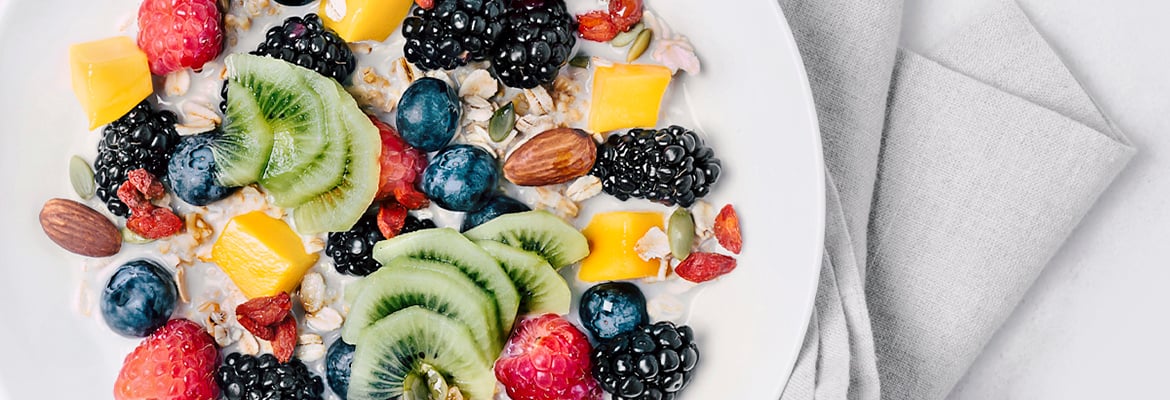
This article was updated on July 7, 2024.
For many of us working from home, we spend the majority of our days in close proximity to our fridges and pantries. Snacking all day long might have become the new norm. Additionally, it can be hard to tell whether you’re snacking because you are hungry, bored, stressed, lonely, tired, or even all of the above.
To help you stay on course with healthy eating habits, we’ve put together our top six tips to help you control your snack-appetite. With a little planning, a well-placed, balanced snack can help regulate appetite and meet your nutritional needs both now and once we get back to a normal routine.
Keep to a routine
Aim to keep to a routine with regular, well-balanced meals though the day. If you find you are overly hungry by the time you get to your next meal, or you get hungry between meals, plan for a healthy snack in between. Aim to include fruits/vegetables and protein-rich foods in your snacks. To keep snack portions in check, portion out snacks instead of enjoying them from the larger container.
Get enough sleep
While this might seem like a strange place to be talking about sleep, it is important to note that sleep deprivation can have a significant impact on our eating behaviour. A lack of sleep impacts your appetite hormones, ghrelin and leptin — not getting enough sleep leads to a decrease in leptin, the satiety hormone, and an increase in ghrelin, the hunger hormone. Practice good sleep hygiene and try to keep to a regular schedule by going to sleep and waking up at similar times each night and morning.
Stock up
Ensure that healthy options are readily available in your fridge and pantry. Satiating snack ideas include:
-
Sliced apple or celery sticks with nut/seed butter like almond, peanut, or sunflower seed butter
-
Fruit salad with zero per cent plain Greek yogurt, sprinkled with cinnamon
-
A sliced apple, pear, or grapes with a light Babybel cheese portion
-
Fruit or raw vegetables and low-fat cottage cheese
-
Veggies with hummus (try a flavoured hummus like roasted garlic, red pepper, or peppercorn for some variety)
-
Wasa or Ryvita crackers with tomato or cucumber slices and low fat cream cheese or Laughing Cow cheese
-
Edamame beans, steamed and unsalted or minimally salted
-
A small smoothie made from frozen or fresh berries, zero per cent plain Greek yogurt, milk or almond milk, and chia/flax seeds.
-
A small palmful of nuts or trail mix
-
A hardboiled egg and some raw vegetables
Avoid ultra-processed options
Try to leave highly-processed snack foods (like chips, chocolates, cookies, candies and ice cream) at the store most of the time. These foods are easy to over-consume if they are readily available to you all day every day. It’s easier to say no once at the store than it is to resist every day at home.
Hydrate
Sometimes we confuse thirst for hunger. If you find yourself craving something, check to see whether it’s your body trying to ask for something to drink. Water is the best choice, but to spice things up, try flavouring water with citrus fruit or cucumber. Soda water or herbal teas can also be good options.
Practice mindful snacking
Before you head over to the kitchen, check in with yourself. Ask yourself if you are truly hungry, or if you are snacking to meet another need. Are you using food as a distraction? Are you snacking to meet an emotional need? If you are not truly hungry, try to find another activity like calling a friend or going for a walk.
Looking for personalized support? Our nutrition team is here for you.
